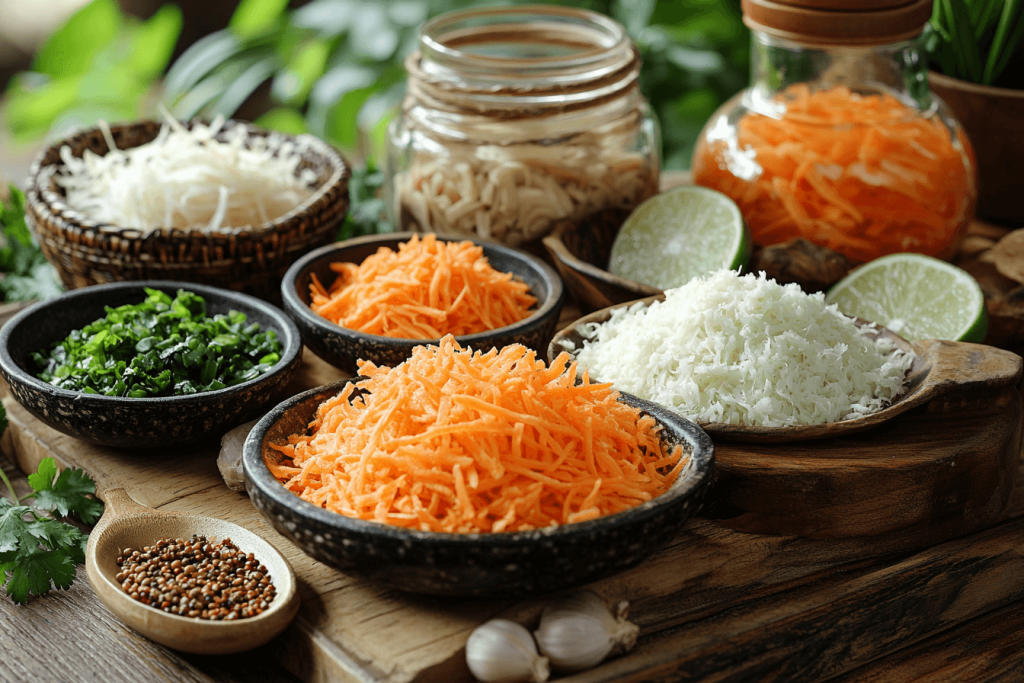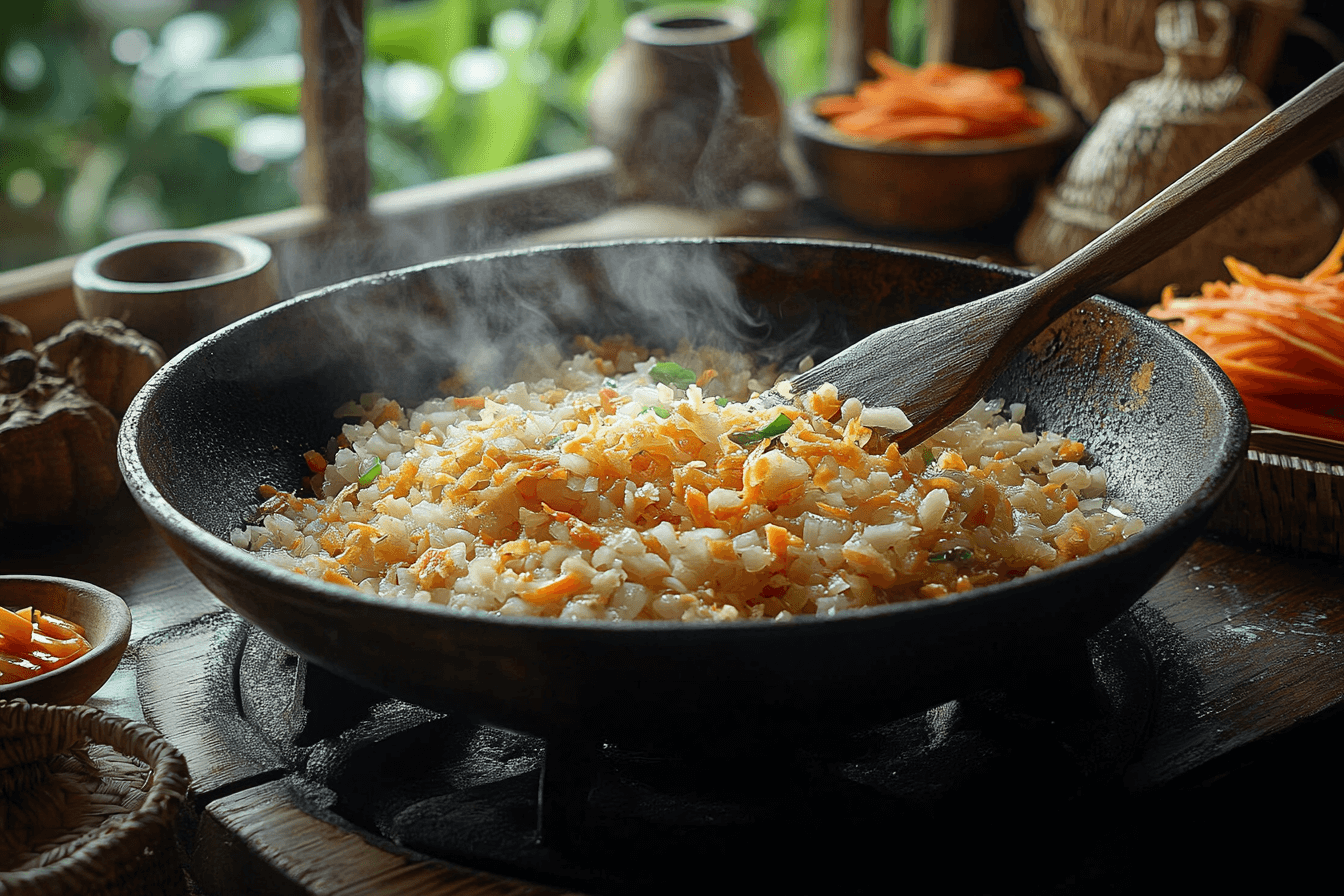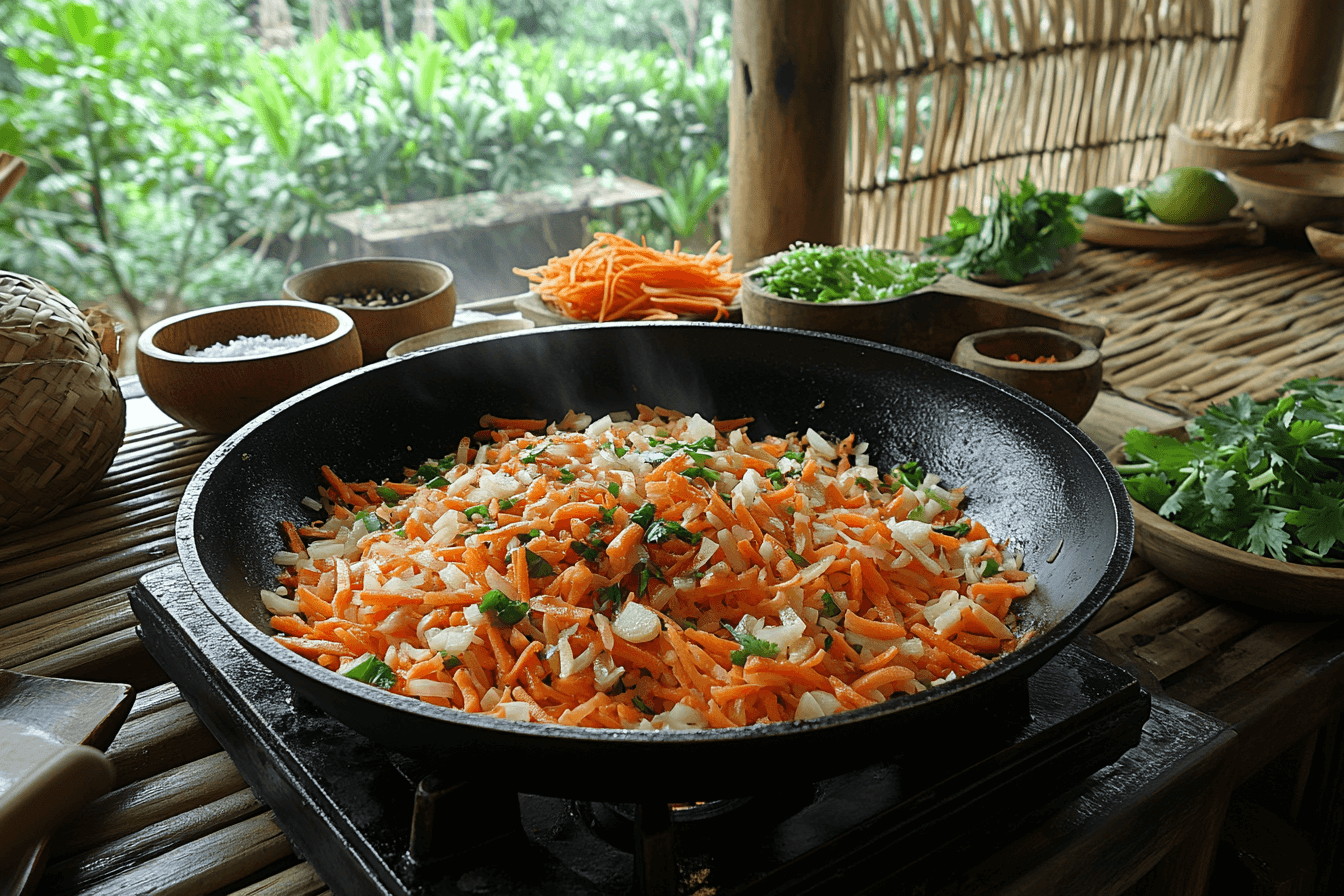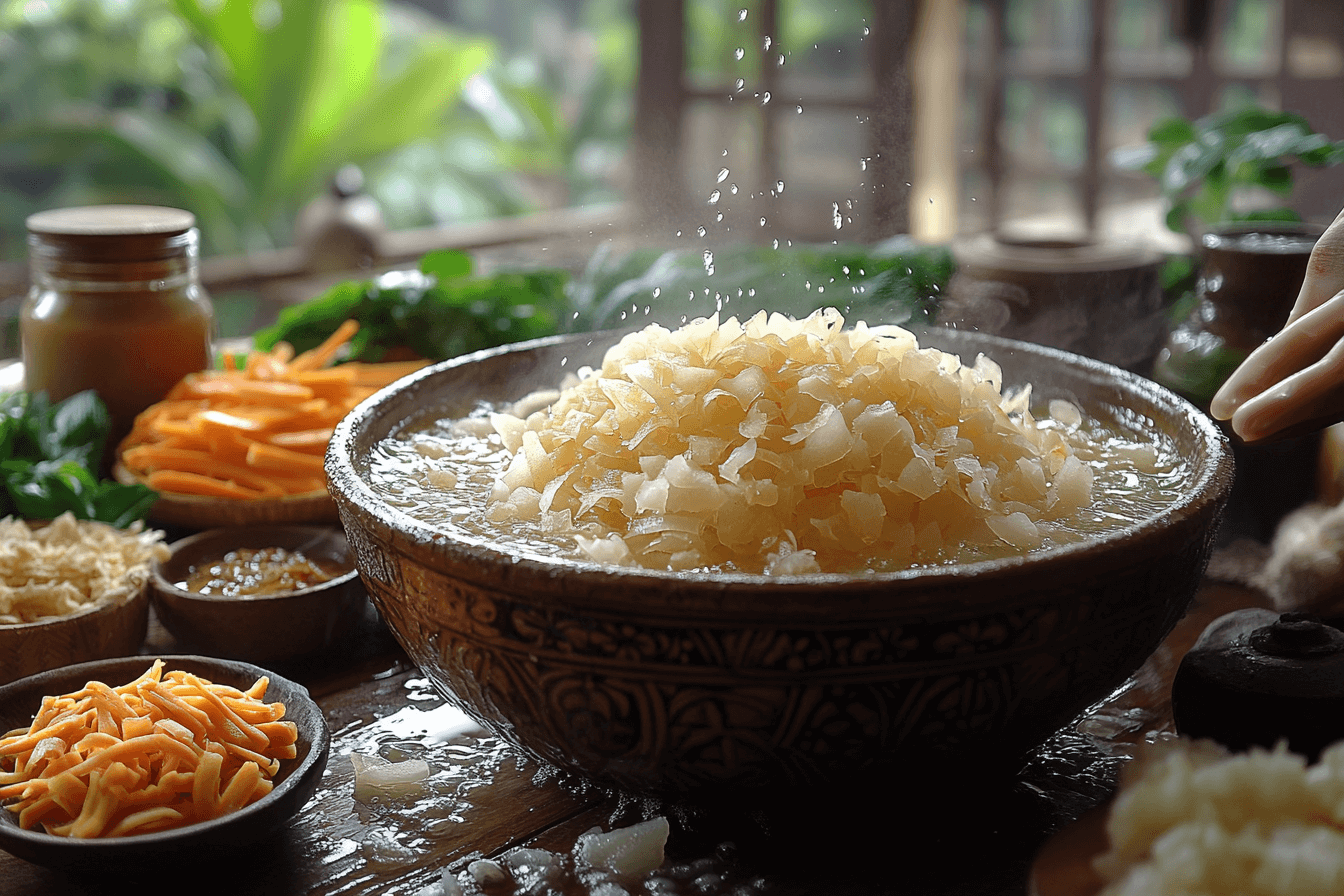Easy Simmered Dried Radish Recipe for Families in Bali
Simmered dried radish, or “Kiriboshi Daikon,” is a simple yet nutritious Japanese dish that pairs well with steamed rice.
This Balinese-inspired version uses locally sourced ingredients such as coconut oil and kecap manis to create a flavorful twist on the traditional recipe.
Perfect for families visiting Bali, this dish is both kid-friendly and easy to prepare.
Table of Contents
What is Simmered Dried Radish?
Simmered dried radish, or “Kiriboshi Daikon,” is a traditional Japanese side dish made by rehydrating dried daikon strips and simmering them in a savory broth.
Rich in fiber and nutrients, it’s a healthy accompaniment to any meal. This recipe incorporates Balinese flavors to create a fusion dish that is both familiar and unique.
Balinese Twist on Japanese Dried Radish
By using Balinese ingredients such as coconut oil and soy sauce, this version of simmered dried radish adds a tropical flair.
The sweetness of soy sauce complements the umami-rich flavors of the dish, while garnishing with fresh coriander and lime enhances its vibrancy.
Ingredients for Bali-Style Noodle Dish

50g dried radish strips (Kiriboshi Daikon)
1 medium carrot, julienned
1 tablespoon Balinese coconut oil
2 tablespoons kecap manis (sweet soy sauce)
1 tablespoon soy sauce
1 teaspoon grated ginger
1/2 cup water or dashi stock
Garnish: Fresh coriander and lime wedges
Allergen Information: Contains soy. Substitute soy sauce with tamari for a gluten-free option.
Step-by-Step Guide to Cooking Simmered Radish
Rehydrate the Radish:
Place the dried radish strips in a bowl and cover with warm water. Allow them to soak for 10-15 minutes.
Drain and gently squeeze out excess water. This step ensures the radish softens and absorbs flavors during cooking.
Prepare the Ingredients:

Heat the Oil:

Cook the Radish and Carrots:

Add the Sauce:

Reduce the heat to low, cover the skillet, and simmer for 10-12 minutes, stirring occasionally.
Final Touches:

Serve:
Transfer the simmered radish and carrots to a serving dish. Garnish with fresh coriander leaves and a wedge of lime.
Serve warm alongside steamed rice or as part of a larger meal.
Tips for Bali-Style Presentation and Plating
Banana Leaf Lining: Use banana leaves to line the serving dish or tray. This adds an authentic Balinese aesthetic and enhances the overall presentation.
Highlight Colors: Arrange the simmered radish and carrots neatly, ensuring the vibrant orange of the carrots contrasts with the golden brown of the radish.
Add Local Garnishes: Include slices of fresh lime, thinly sliced red chilies, and a sprinkle of toasted sesame seeds for added texture and visual appeal.
Use Traditional Serving Ware: Serve the dish on a woven bamboo tray or in a clay pot to reflect traditional Balinese dining practices.
Family-Style Dining: Present the dish in a large bowl, surrounded by smaller bowls of steamed rice, sambal matah, and pickled vegetables, encouraging communal sharing in true Balinese style.
Detailed Recipe Overview and Cost for Bali Families
Preparation Time: 10 minutes
Cooking Time: 15 minutes
Difficulty Level: Easy
Servings: 4 (Kid-sized portions)
Calories Per Serving: 120 kcal
Nutrition Facts (Per Serving):
Calories
120 kcal
Fat
4g (2g saturated fat)
Cholesterol
0mg
Sodium
350mg
Carbohydrates
18g (5g sugars, 3g fiber)
Protein
3g
Estimated Cost in Bali: IDR 40,000 – 60,000 (for 4 servings)
FAQs About Cooking Simmered Radish in Bali
Q1: Can I use fresh radish instead of dried radish?
A: Yes, but fresh radish will have a milder flavor and softer texture. Adjust the cooking time accordingly to avoid overcooking.
Q2: Where can I find Balinese coconut oil?
A: Balinese coconut oil is readily available in local markets and specialty grocery stores. Look for cold-pressed varieties for the best flavor.
Q3: What side dishes pair well with this recipe?
A: Serve this dish with steamed rice, sambal matah, and a side of grilled chicken satay for a complete Balinese-inspired meal.
Q4: How can I make this dish more kid-friendly?
A: Reduce the amount of soy sauce and kecap manis for a milder flavor and add a touch of honey to enhance the sweetness.


